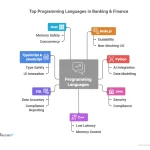
There are many different types of mortgage finance, from fixed-rate mortgages to unsecured loans. While the terms and conditions for a mortgage loan are similar from country to country, there are important differences between them. A durable mortgage finance system should be able to provide long-term fixed-rate financing for consumers and a stable, secure environment for investors. Federal involvement in mortgage finance should ensure that the federal government supports the least expensive way to provide mortgage finance.
Today, the federal government backs almost every home loan made in the country. However, this level of federal support is not sustainable in the long run. Ultimately, private capital must assume a greater share of the mortgage market, and the federal government should be part of the transition process. The government should be a prominent player in the future of the mortgage market, but it should do so responsibly. This will require an ongoing dialogue with policymakers and the private sector.
In the past, the government stepped in and took control of the major mortgage financiers, Freddie Mac and Fannie Mae. At the time, these institutions required more than $150 billion in taxpayer support. The federal government was backing 95 percent of the home loans in the U.S. at the time, and now, these institutions are in conservatorship. The government is hoping these changes will stabilize the housing market and restore financial stability. If this happens, it could mean better times for the American economy and the financial system.
The mortgage loan is a type of secured loan backed by an immovable asset, typically a house. During the repayment period, the property remains the borrower’s. It can be used for construction or purchase, and it has specific end-use restrictions. If you don’t make timely payments, the lender can take possession of the property. In some cases, mortgage loans are offered by specific banks. These banks are known as “mortgage specialists”.
Another type of mortgage finance is an adjustable-rate mortgage. With an interest-only mortgage, the borrower doesn’t have to pay the principal during the introductory period. This is beneficial for first-time borrowers, as it decreases the monthly costs of borrowing and enables them to qualify for larger loans. The balance due on the loan doesn’t change until the borrower pays the principal. This is a popular form of mortgage financing, as it helps first-time buyers become home owners.
A loan against property is a way to purchase a house, and it’s often a better option than a personal loan. The difference between the two types of mortgage finance lies in the property documents, which are transferred to the lender upon loan approval. However, even though the house documents remain in the lender’s hands, the borrower still retains ownership of the property throughout the tenure. A property loan may also be more advantageous than a personal loan, especially for those who plan to use the money for a larger loan or need a longer repayment period.







